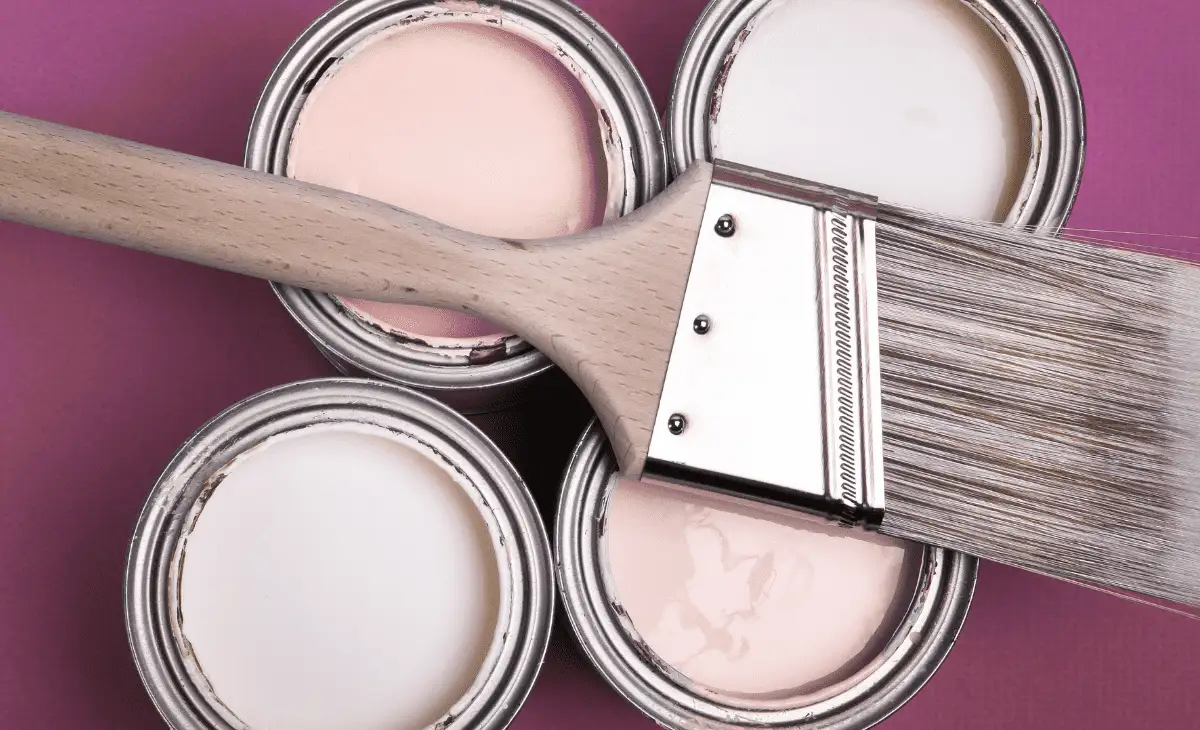Choosing the right paint can be tricky, especially with so many types to choose from. Learn the key differences between waterborne and solventborne enamels, analyzing the differences between enamels, latex, and oil-based alternatives. Make sure you get the coating that’s perfectly matched to your surface, budget, and finishing needs.
What is the difference between water-based and solvent-based enamel paints?
Just like regular paints, enamels are divided into water-based and solvent-based enamels due to their solvent composition. The differences between the two types of enamels affect their performance, how they are applied, and their impact on the environment. Let’s break it down in a way that will help you choose the right enamel for your project.
Water-Based Enamels
Water-based enamels, sometimes called acrylic enamels, use water as their primary solvent. As a result, water-based enamels are generally less odorous and emit fewer volatile organic compounds (VOCs). Although water-based enamels take longer to cure thoroughly, they dry faster than solvent-based enamels, and you can usually repaint within a few hours. So if you’re working on a project that needs to be completed quickly, water-based enamels can save time.
Modern water-based enamels don’t yellow over time, which makes them ideal for light-colored applications, such as walls, trim, or furniture. That being said, they’re still not as durable as solvent-based enamels when it comes to extreme wear and tear, so they’re not the best choice for high-traffic areas or exterior surfaces exposed to the elements.
Solvent-Based Enamels
Solvent-based enamels (also called alkyd enamels) use oil or another type of organic solvent to hold the paint’s pigments and binders. Known for their tough and long-lasting sheen, these paints create a smooth, glass-like surface that is highly resistant to chipping, scratching, and even moisture. They are great for doors, trim, cabinets, and outdoor metal surfaces.
Solvent-based enamels take longer to dry than water-based enamels. You may need to wait up to 24 hours before applying another coat. The downside to solvent-based enamels is that they have a stronger odor and emit more VOCs, which create air pollution and potential health risks. Cleanup is also more challenging, requiring brushes and tools to be cleaned with mineral spirits or other solvents.
| Feature | Water-Based Enamel Paint | Solvent-Based Enamel Paint |
|---|---|---|
| Main Solvent | Water | Organic Solvents (e.g., oil, alkyd) |
| Drying Time | Fast drying (hours), longer full cure | Slower drying (24+ hours), faster curing |
| Durability | Resistant to yellowing, moderate toughness | Highly durable, better for heavy-duty use |
| Environmental Impact | Low VOCs, easy cleanup (soap and water) | High VOCs, solvent-based cleanup required |
| Odor | Low odor, better for indoor use | Strong odor, requires good ventilation |
| Application | Easier to apply, forgiving | Requires skill, slower to dry, brush marks possible |
| Best Uses | Indoor surfaces, furniture, lighter colors | High-traffic areas, metal surfaces, outdoors |
Enamel paint vs. latex and oil-based paints.
When comparing enamel, latex, and oil-based paints, it helps to understand the differences in terms of finish, use, odor, additives, drying time, cost, and cleaning.

Enamel paint vs latex and oil based paints
- Finish and Application:
Enamel paint is known for its hard, durable finish and can handle high-traffic surfaces like doors, trim, or furniture. Latex paint, on the other hand, offers a softer finish, making it better for interior walls and ceilings. Oil-based paints can be applied similarly to enamels, but they tend to yellow over time, making them less suitable for lighter surfaces. - Odor and Additives:
When it comes to odor, enamel and oil-based paints can be difficult to deal with. Solvent-based enamels and oil-based paints both have strong odors due to their oil-based ingredients, which contain volatile organic compounds (VOCs). Latex paints are water-based, have much fewer VOCs, and have a much lower odor that evaporates easily, making them a healthier choice for interior use, especially in homes where air quality is important. - Drying Time:
If you’re in a hurry, latex paint definitely wins. It dries quickly—sometimes in just a few hours—while enamels and oil-based paints take much longer. Oil-based paints can take up to 24 hours to dry, and even water-based enamels, while drying faster than solvent-based enamels, don’t dry as fast as latex. - Cost:
In terms of cost, latex paint tends to be more affordable. Enamels and oil-based paints, while more durable, are usually more expensive due to their special formulas and increased durability. But if you’re in it for the long term, the extra cost is worth it. - Cleanup:
This is where latex paint really shines. Cleaning up after applying latex paint is simple—just water and soap. For enamel or oil-based paints, you’ll need stronger solvents like turpentine or mineral spirits, which adds to the hassle of the process.You can go to our corresponding blog to learn how to remove oil-based paint.
| Feature | Enamel Paint | Latex Paint | Oil-Based Paint |
|---|---|---|---|
| Finish | Hard, durable, glossy | Softer, matte or semi-gloss | Durable, but yellows over time |
| Application | Best for doors, trim, furniture | Best for interior walls, ceilings | Good for trim, doors, outdoor surfaces |
| Odor | Strong (solvent-based) | Low odor, low VOC | Strong odor, high VOC |
| Drying Time | Moderate (faster for water-based) | Fast (2-4 hours) | Slow (up to 24 hours) |
| Cost | Higher | Moderate to low | Higher |
| Cleanup | Solvents (for solvent-based) | Soap and water | Solvents |
How to choose the right enamel paint?
Now that we understand the difference between enamel paint and other paints, the next step is to decide how to choose the right paint for your specific project. There are many types of enamel paints, and comprehensive considerations from factors such as gloss, application surface, environmental conditions, durability, cost, and compatibility can help us choose the right enamel paint.

How to choose the right enamel paint
- Gloss:The gloss of enamel paint can significantly affect the appearance of the project. Look for high-gloss or semi-gloss enamel paints, as they are more durable, more moisture-resistant, and easier to clean. Semi-gloss enamel paint strikes a balance between gloss and practicality, making it a versatile choice for many interior spaces. Satin enamel paint has a softer sheen, a smooth and elegant appearance, and is not highly reflective, which can hide small surface flaws well.
- Application surface:Different surfaces require different types of enamel paints. For indoor or wooden surfaces, it is recommended to give priority to water-based enamel paints, which dry faster, are easier to clean, and are environmentally friendly. Metal surfaces often require solvent-based enamels to help create a harder, more durable surface. Concrete or masonry surfaces can benefit from epoxy-based enamels for excellent adhesion and moisture resistance.
- Consider durability:Enamel paints are known for their durability, but not all types are created equal. If you are painting high-traffic areas or surfaces exposed to the elements, solvent-based enamels are recommended for efficient protection. Water-based enamels are crack-resistant and suitable for materials that cope with expansion and contraction.
- Evaluate environmental and health factors:In recent years, more and more consumers are concerned about the environmental impact and health safety when choosing paints. Enamel paints may seem like a less friendly choice. But if you insist on using enamel paints and are concerned about emissions, it is recommended to consider water-based enamel paints. They produce fewer harmful emissions and can best balance durability with the environment and health.
- Consider Drying and Curing Times:If you’re on a tight schedule, drying and curing times may influence your decision. Water-based enamels dry faster, allowing for more coats to be applied in a few hours. Solvent-based enamels take longer to dry—sometimes with 24 hours between coats. Remember, durability comes at the cost of time.
- Budget and Cost Considerations:Any enamel paint will be more expensive than a standard latex or oil-based paint. However, consider the longevity of your project and spending a little more for a paint that lasts longer, and the investment is often worth it.
- Check compatibility with existing coatings:If you are painting over an old finish, different types of enamel paint may react differently. Before applying enamel paint, make sure the surface is properly sanded and primed to improve compatibility between the new and old finishes.
By considering these factors and fully understanding the needs and challenges of the project, choosing the right enamel paint will no longer be an overwhelming task.
Now that you understand the differences between water-based and solvent-based enamel paints, and how they compare to latex and oil-based paints, you are better equipped to make an informed decision for your next project. Take the time to evaluate the surface, usage conditions, and project timeline to help you make an informed choice. If you are looking for a specific enamel paint product or supplier, browse our corresponding directory to connect with trusted manufacturers and service providers.
Is latex paint thicker than enamel paint?
No, enamel paint is thicker and latex paint is thinner. Latex paint is water-based and usually has a more fluid consistency. Enamel paint provides a smooth, hard surface with its thicker, more viscous texture. However, both can be adjusted for specific applications through additives, so thickness is not a fixed property.
What is the difference between acrylic and enamel paint?
The main difference lies in their base. Acrylic paint is water-based, while enamel paint can be oil-based or solvent-based. For more details, please refer to the topic “Difference between water-based and solvent-based enamel paint” mentioned above.

